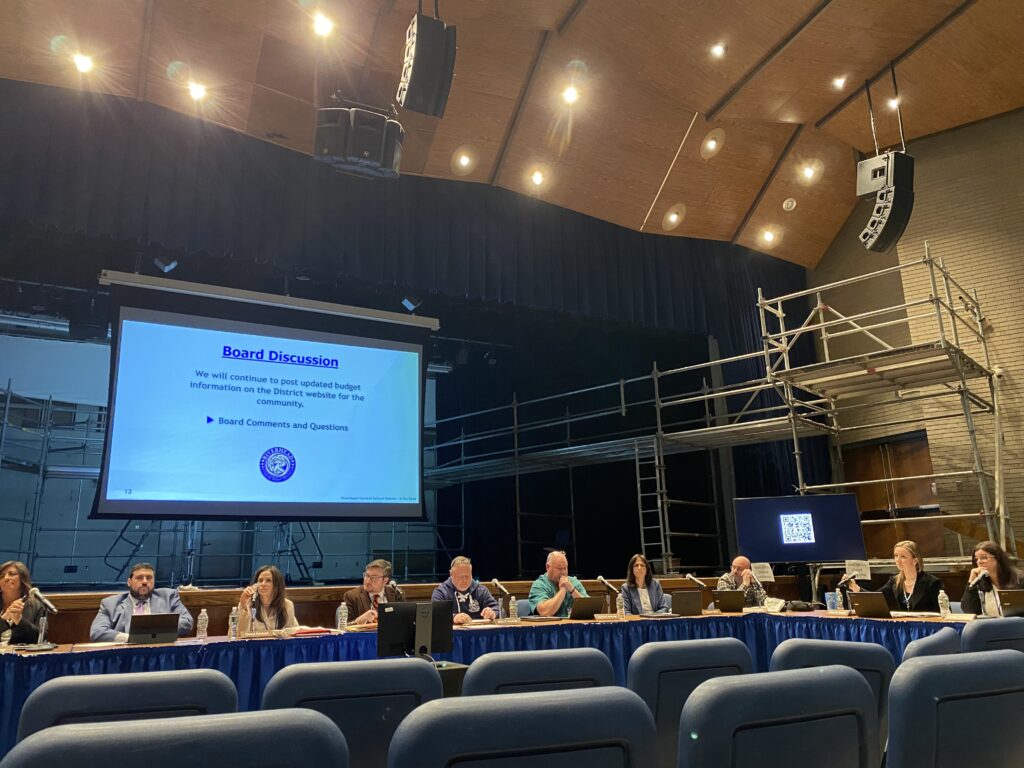2020 Educators of the Year: Kimberly Benkert and Robert Brandi

‘Uncharted territory’ is perhaps the best way to summarize the state of education in 2020.
In Riverhead, schools first shut on Friday, March 13, out of an abundance of caution, giving custodial crews time to thoroughly clean each building. Just three days later, though, a statewide edict closed all schools for an initial two-week period as COVID-19 grew seemingly exponentially.
Students were suddenly left to connect with their teachers through a screen — if they had one — from bedrooms, living rooms and kitchen tables transformed into classrooms. And when schools reopened in September, it was far from a normal first day of school.
For teachers, work has carried on, despite all the challenges that come with educating during a pandemic.
As Riverhead quickly moved to “distance learning,” two educators in particular rose to the occasion, coaching colleagues through on-the-fly training sessions on virtual learning platforms, without being asked to do so.
For their expertise in technology and willingness to help others adapt, the Riverhead News-Review’s Educators of the Year are Kimberly Benkert and Robert Brandi.
“Last year, if you told me I’d be teaching in a little room in my house to 27 kindergartners, I would have said, ‘That’s impossible,’ ” said Keri Stromski, a teacher at Aquebogue Elementary and past recipient of this award. “But because of them, we can.”
The duo — Ms. Benkert, a veteran kindergarten teacher, and Mr. Brandi, a longtime math teacher at the high school — were described by interim superintendent Christine Tona as leaders in the area of technology in the classroom.
“Without the two of then, we wouldn’t have been able to mobilize as quickly as we did,” Ms. Tona said.
Ms. Benkert immediately began leading training sessions for Seesaw, an educational app that quickly became a critical link for the district’s youngest students and their teachers, while Mr. Brandi focused his wealth of knowledge on platforms like Google Classroom for secondary teachers scrambling to adapt their lesson plans to a virtual setup.
“They just stepped up and did what had to be done,” Ms. Stromski said. “They were on the lifeboat and were pulling us all in.”
The trainings became unofficial extra-help sessions by and for teachers, from Zoom sessions with 65 attendees to one-on-one phone calls and Facetime sessions . “It was also shortcuts and hints and calming people down,” Ms. Tona said. “Because it was a sudden barrage of all things technology and everyone was at a different place.”
At first, the plan was to tide them over for that two-week closure. “At the time everyone thought, ‘We just have to come up with something for a week,’ and pretty soon we realized we needed to find a way to do this,” Ms. Benkert said, as the weeks stretched into months.
She found that her colleagues were “thirsty for knowledge” and ready to overcome the fear of teaching beyond their comfort zones.
“I’m so proud of our members. There are people that were uncomfortable on day one sending an attachment in an email that are now recording lessons and making Bitmoji classrooms,” she said. “The transformation has been tremendous.”
Pandemic aside, Ms. Tona said both educators are worthy of praise.
“They’ve always given of their time,” she said, between Parent University events and workshops and serving on various internal committees.
Mr. Brandi, she said, shows dedication to all students and continually bridges his lessons in calculus and other mathematics to real-world applications in coding or data analysis.
“He understands that not everyone’s a mathematician, but fine tunes what he has to teach for students in front of him,” Ms. Tona said.
Distance learning is nowhere near perfect and any teacher would agree that there’s no replacement for teaching in person.
It’s a juggling act, Ms. Benkert conceded, but she believes that, as a district, they will come out stronger.
Asked if there were any positives from the hybrid and virtual learning scenarios, Ms. Benkert said she feels a stronger bond to her students’ parents and that more of her colleagues will integrate technology into their classrooms moving forward.
Undoubtedly, the full impact of distance learning and its impact on students will be studied and discussed for years to come.
But one thing is for sure: The pandemic has reshaped how teachers do their jobs.
“COVID has made us rethink education,” Ms. Tona said, noting that one “silver lining” is the district’s ability to use technology to support students in the classroom.
And like every other aspect of life during a pandemic, education continues to evolve. Live, synchronous teaching is expected to begin in some classes at the middle and high school level this month while some elementary students returned to full time in person learning this week, with masks, barriers and social distancing guidelines in effect.
Previous Winners
2019: Sal Loverde
2018: Ed Meier
2017: Felicia Scocozza
2016: Melissa Haupt
2015: Robert Shilling
2014: Greg Wallace
2013: Keri Stromski
2012: Jeff Doroski
2011: Jim Schaefer
2010: Stacy Tuohy
2009: Laura Grable
2008: Vincent Nasta
2007: Marion Dorman
2006: Theresa Drozd
2005: Frank Rotenberg
2004: Kevin McAllister
2003: Leif Shay
2002: Bob Jester
2001: Jean Lapinski
2000: Pat Rose
1999: Pat Snyder
1998: Carol Masin
1997: L. Custer, J. Greenberger
1996: Terri Peters
1995: Jim Roth
1994: Tim Hubbard
1993: Dot Moran
1992: Dorothy Lipsky
1991: Willie Patterson
1990: Audrey Stupke
1989: Ray McKieghan
1988: Stanley Krouse








